BBC News, Suffolk
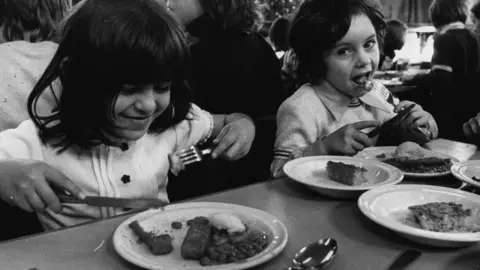 Getty Images
Getty ImagesHoards of hungry children with rumbling tummies are a common sight in school dinner halls, and a new exhibition has opened in Suffolk telling the stories of those lunchtime tastes and aromas – good or bad.
The BBC asked for your recollections from days gone by, and your warm – and not-so warm – memories came in thick and fast (much like the custard dolloped on top of sponge puddings).
Here are a few tales to whet your appetite – or perhaps put you off your dinner.
‘Looked horrible, tasted horrible’
 Peggy Murphy
Peggy MurphyPeggy Murphy, 85, from Bayswater, London, still remembers “a notorious pudding” from her school days.
“It looked horrible, tasted horrible, it was hard and awful – my friends and I still reminisce about it,” she says.
The pudding was served at Woodford County High School, Woodford Green, where Mrs Murphy went between 1950 and 1956.
“It was made with a thin, greyish pastry which had been spread with red jam before being loosely rolled up and presented flattened and in the shape and size of a small baby,” she explains.
But Mrs Murphy recalls the school also had “a civilised way of serving our food at the tables set with 10 or 12 girls, and one girl was in charge of serving the others – like a dinner party, really”.
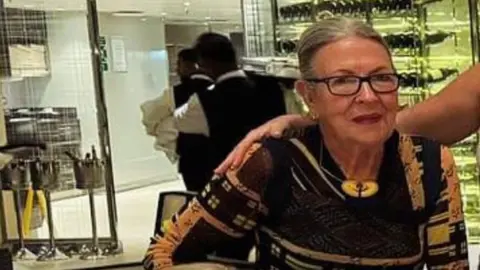 Peggy Murphy
Peggy Murphy‘Nostalgic feeling’
Zahida Khan, on the other hand, has fond memories of her time in the school dinner hall in Wembley.
So much so that the 52-year-old has tried some of her old favourites on her own two children, who are home-schooled.
“I loved my school dinners,” she says.
“We had tapioca, semolina, treacle sponge pudding, as well as jam roly-poly, cake with icing and sprinkles, chocolate cake and pink custard, and more.”
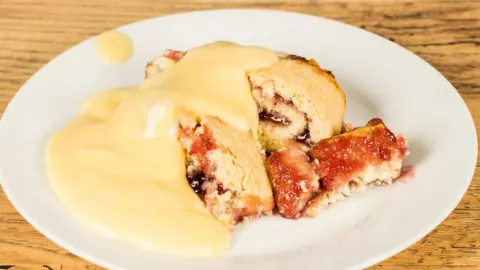 Getty Images
Getty ImagesShe bought some tinned semolina so her children could try – and it didn’t go too badly.
But tapioca was different.
“They didn’t like it at all – the kids just said ‘no’.
“But I have great memories and I enjoyed about 90% of those dinners.
“When I see some of those meals and puddings these days it takes me right back – it’s a lovely, nostalgic feeling.”
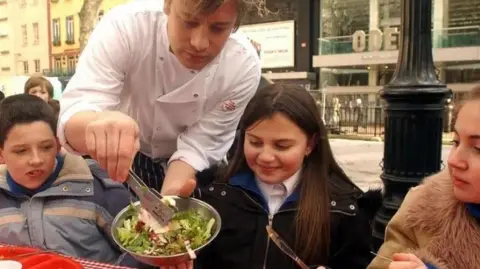 PA Media
PA MediaA brief history of school dinners
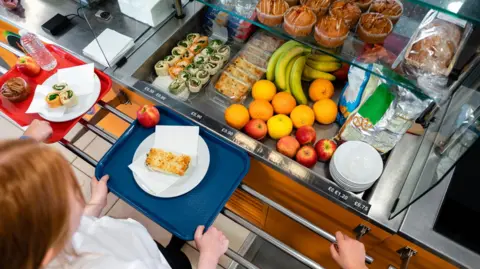 Getty Images
Getty Images- The Provision of Meals Act was introduced in 1906 and was designed to give free school meals to all children
- Meals were usually in the form of breakfast and included porridge, bread with dripping and a glass of milk
- During the 1920s and ’30s, mutton stew and treacle pudding found their way on to the school menu
- In 1944 it was made compulsory for local authorities to provide school dinners as part of the war effort
- Rationing was in place post-war and tinned meats became popular because of their longevity and the jam roly-poly was also a favourite
- Post-rationing, corned beef and fish and chips would become staples followed by rice pudding with a dollop of jam
- During the 1980s and ’90s, private contractors battled to put food on the school dinner table at lower costs – and pizzas, fries and chicken nuggets became quite normal
- A 2005 campaign to improve school dinners by chef Jamie Oliver led to an overhaul of school meals, and junk food was largely banned from canteen menus
- In 2015 a new regulation came into effect meaning every meal would have to include at least one portion of vegetables or salad, and a wide variety of fruit and vegetables should be available.
Source: BBC Bitesize
‘Last in the queue’
 George Williams
George Williams“I have pretty harrowing memories of primary school of always having the scraps,” says George Williams.
The 36-year-old had the bad luck to attend a primary school in Watford where school dinners were served to pupils according to the A to Z order of their surnames, always beginning with A.
“My brother, sister and I were always last as our surname began with W,” he says.
“The school offered choices each day, but by the time I turned up they might have to scrape a spoon around several times to get a serving and it was always colder.”
The data analyst from Hemel Hempstead recalls two of his least favourites: “Mushrooms and rice pudding, both of which I remember being sloppy and stinking.
“I tried to gag them down and see what I could get away with hidden under my spoon.”
 George Williams
George Williams‘Sobbing over semolina’
 Judith Morris
Judith Morris“A pudding really shouldn’t reduce a child to tears,” says Judith Morris, recalling her school days in Harrow.
Now 77 and living in Witney, Oxfordshire, she remembers a primary school friend sobbing at the sight of semolina.
Years later she penned a poem called “Cold Semolina”, recalling that as she tried to comfort her friend she was sent to stand in a corner.
“I just thought no-one should be reduced to tears by a pudding,” she says.
“But I ate it because I was always told to eat what was in front of me, so you just got on and ate it.”
 Judith Morris
Judith Morris‘Better than mum’s’
Many others who got in touch remember their school meals fondly, including Ann Dudley-Wardey, now 68, who went to school in Tonbridge, Kent.
“I thought the school lunches were great and, sorry mum, better than her cooking.
“The range was varied and good and the desserts were fab,” she recalls.
Gary Stevens, 47, from Bromley, remembers his “mid-’80s dream school dinner – frankfurters, chips and beans, followed by chocolate cake and custard. Normally on a Friday at the end of the month. Best day of school ever!”
However, he also recalls the “nightmare” that was liver and bacon with cabbage, followed by pink blancmange.
Looking back, Ann Sheppard, 73, from Reading, thinks she must have hit the jackpot.
“I think my school must have been quite posh because we had a bread bowl in the middle of the table, and in the summer a salad bowl.
“All the meals were cooked in the school kitchen and the roast dinners were lovely, likewise the fish and chips on a Friday.”
An exhibition about school dinners is on at The Food Museum in Stowmarket, Suffolk.
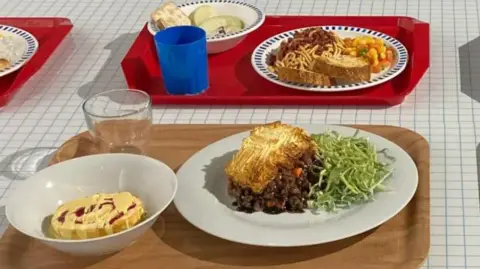 Luke Deal/BBC
Luke Deal/BBC
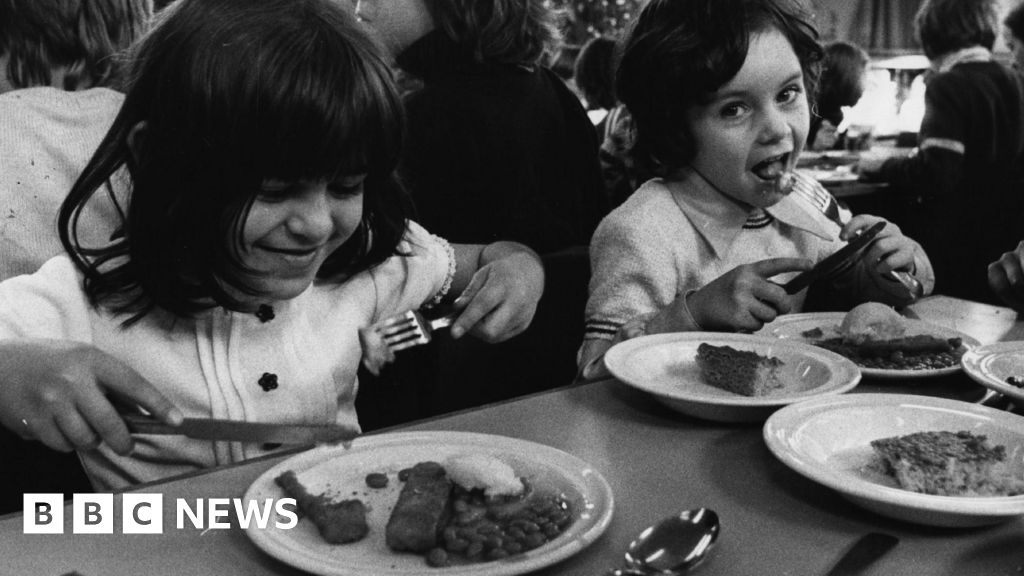


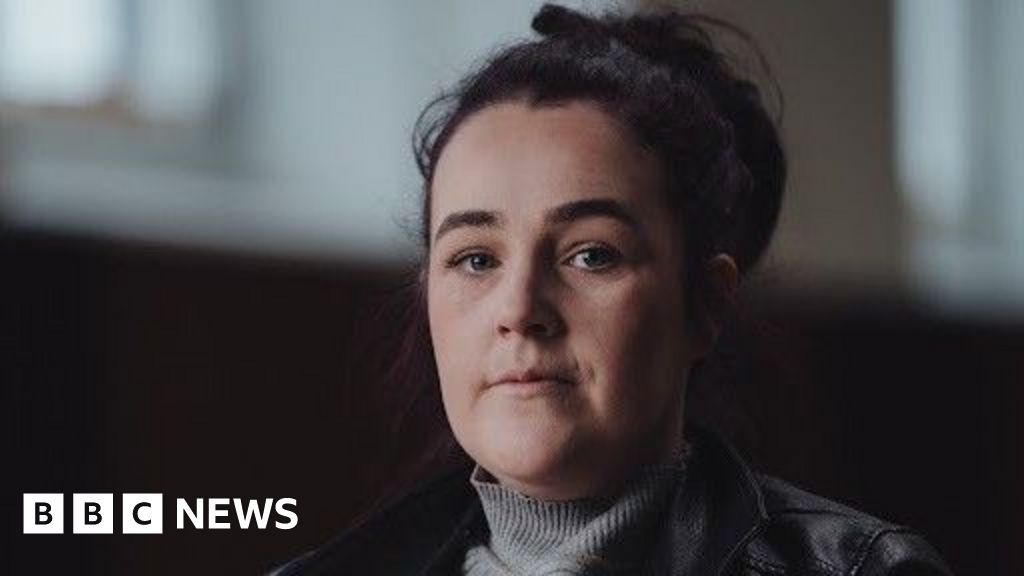












Leave a Reply